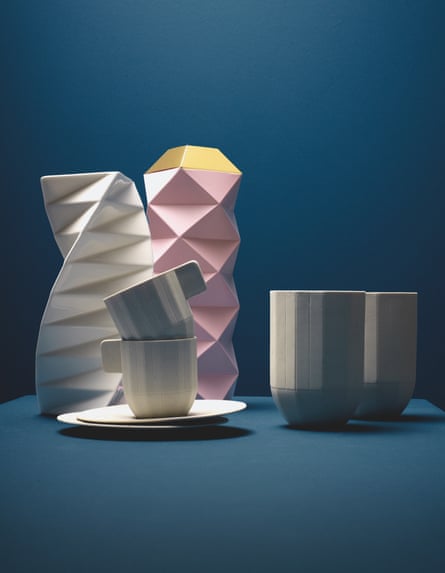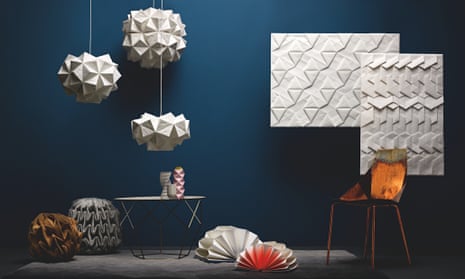In a bright east London studio, designer Kyla McCallum is folding paper. Sheet by sheet, she makes 11 folds in each of 70 pieces of Italian parchment. She talks as she works, barely watching what she’s doing, her hands moving automatically. An hour later, she is surrounded by 70 paper pyramids, which she carefully glues together to form the Chloe pendant.
McCallum is far from alone in her fascination with paper: origami motifs and techniques have appeared on the catwalks of everyone from Issey Miyake to Gareth Pugh, and there has been an explosion in home accessories inspired by the Japanese art form. So why the sudden fascination with this ancient craft?

Paper is disappearing from our lives. Diaries have been replaced by online calendars, letters supplanted by emails. Yet even as we become increasingly digital, we seem to hanker after something more tangible.
At home, people are creating warm, tactile retreats from the demands of their blinking smartphones, computers and tablets. Tracey Tubb’s hand-folded wallpaper envelops you in its sculptural folds. And the raised contours in Esti Barnes’s rugs massage your toes.
The trend has made its way into furniture, too. Jule Waibel’s pouffe-like “cone” seats are made from wool felt pleated into sumptuous folds that flex under your weight. And the Real Good copper chair requires a little origami skill itself – it arrives as a flat-pack, assembled by simply folding along its laser-cut lines. But forget the stress of most self-assembly pieces, creating a chair this way could actually relax you, the experts say. “You’re doing something with your hands that you don’t have to actively think about,” says McCallum. “It is just enough to stop your mind racing – it’s like meditation.”

Comments (…)
Sign in or create your Guardian account to join the discussion